- Joined
- Nov 26, 2005
- Messages
- 5,017
- Reaction score
- 9,965
Hi,
This is an excerpt from a comprehensive tutorial I am doing on another forum discussin building an historically correct English fowler. This method for making ramrod pipes is specifically suited to British fowling guns. When working with steel mounts, our selection of appropriate parts is very limited. The best ramrod thimbles commercially available for British guns are the cast steel English fowler thimbles sold by TOW and others. However, they only come in 3/8" diameter, which is too big for a really slim fowler and not consistent with the originals on which I am basing my build. I decided to make my own in 5/16" diameter but I wanted nicely styled thimbles with raised borders on the ends, like many originals. I used a method I learned from Kit Ravenshear many years ago. I like making thimbles and I am pretty good at it after all these years.
For this gun, I want the forward thimble to be a bit larger than the others to accommodate a substantial swell in the ramrod. The other thimbles are to be slightly larger than 5/16" but the forward thimble is to be 23/64". I want a fairly robust ramrod so it can hold up to loading tight patched round ball as well as bird shot. The original fowlers I own were clearly set up for bird shot and have very wimpy tapered rods. I designed a slight compromise to include a bigger rod but not lose any slimness of the gun. I use a little 3" x 2" steel plate I made years ago to form raised edges on thimbles and bend the tabs.
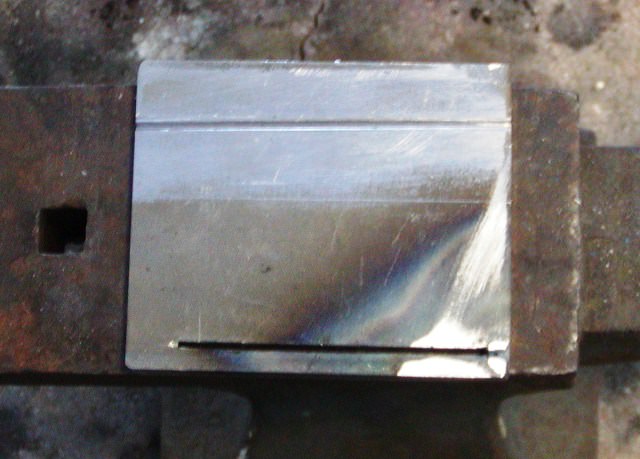
I used 0.03" thick sheet of mild steel. The first step is calculating the width and length. The thimbles are just under 1.5" long so I needed to add a little extra length for the raised borders. I calculated width figuring they needed to be 5/16" (a little larger actually) and 23/64" and multiplying those dimensions by 3 and then adding 1/2" for 2 1/4" high tabs. I cut the sheet with shears and then squared the piece up.
My little forming plate has a 1/16" wide slot for bending the tabs and a 1/16" wide and 1/32" deep groove for forming the raised edges. I place the flat sheet steel on the plate and line up one end of the thimble with the groove, then punch it in with a cold chisel that has the sharp edge thinned and rounded over. It forms a nice little raised border. I repeat the process for the other end of the thimble
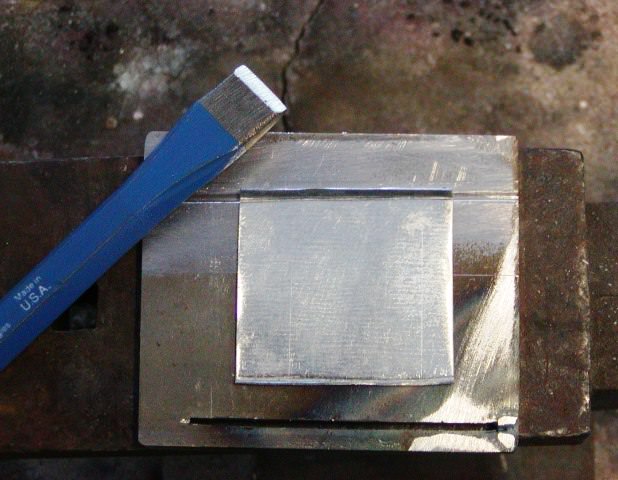
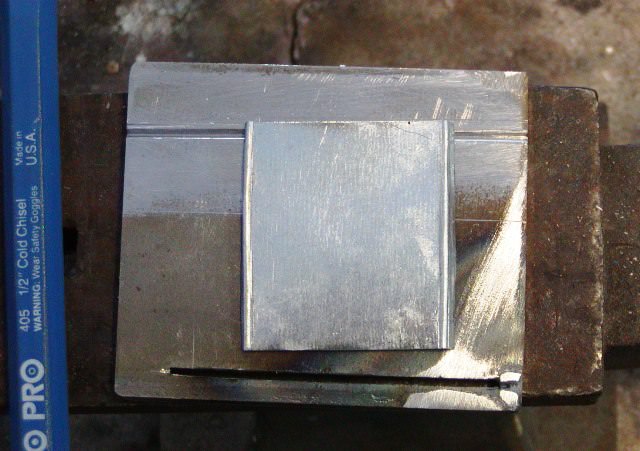
Then I grind off any excess metal beyond the raised border and proceed to bend the tabs.
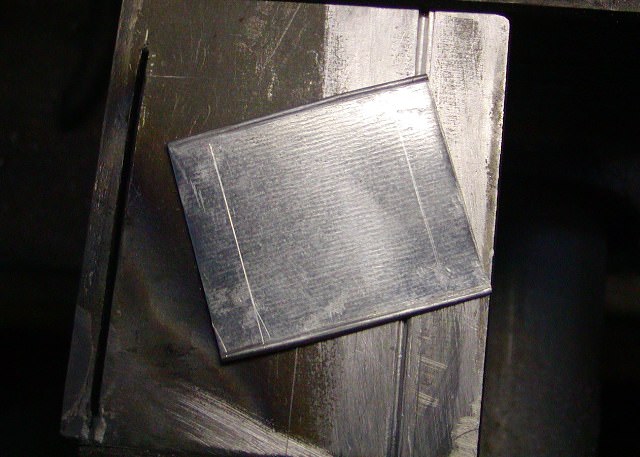
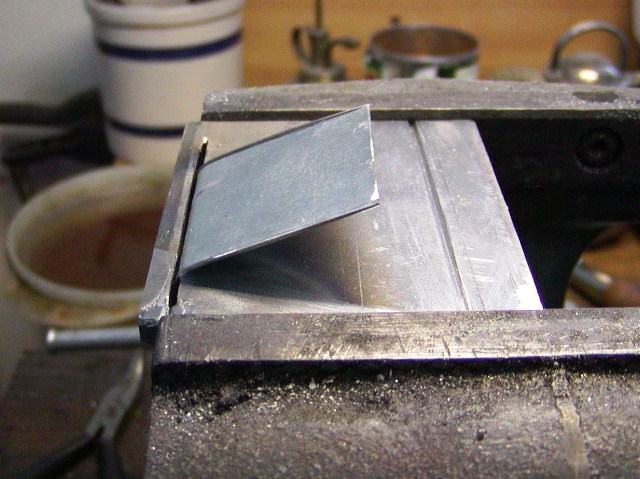
When those are formed, I take a proper diameter drill or rod and hammer it down along the middle of the thimble to start forming the pipe. I go as far as I can before compressing the tabs in my vise around the mandrel. After forming the tube, I solder the tab together and clean up the ends as well as the tab. A very clean and attractive thimble that duplicates those on many British fowlers of the period is the result.
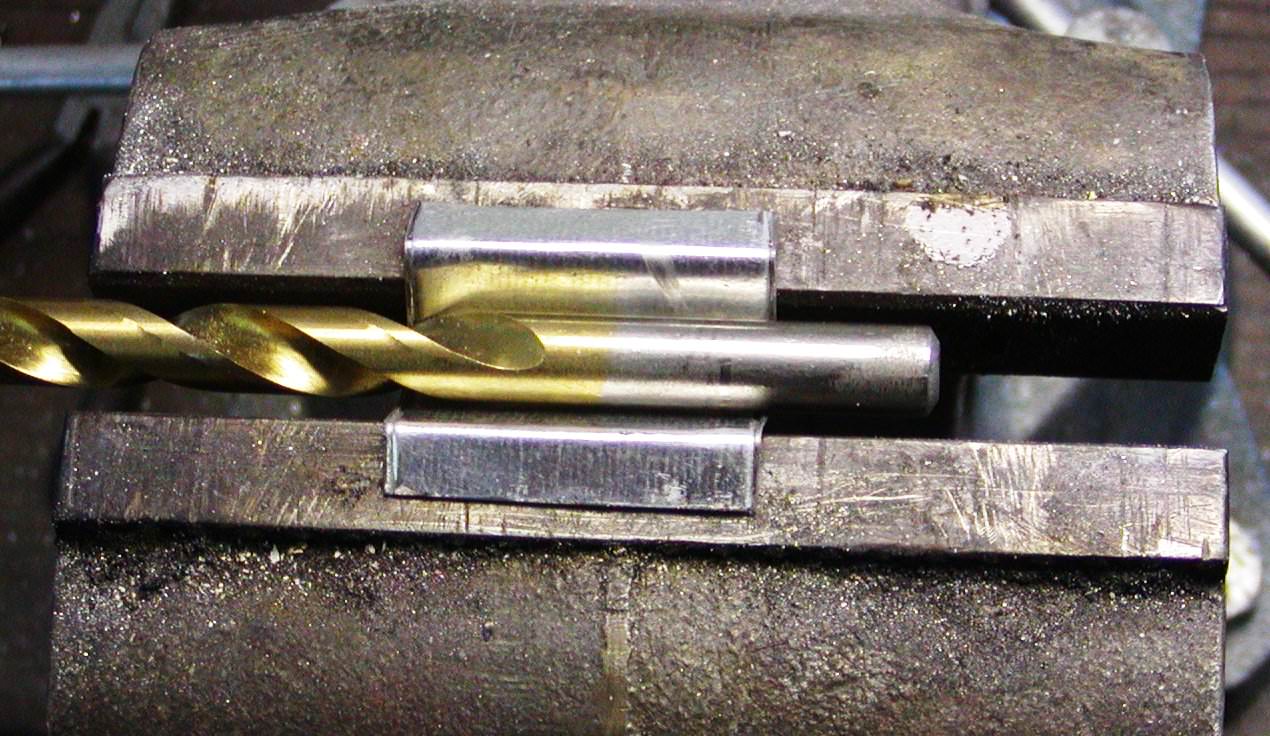
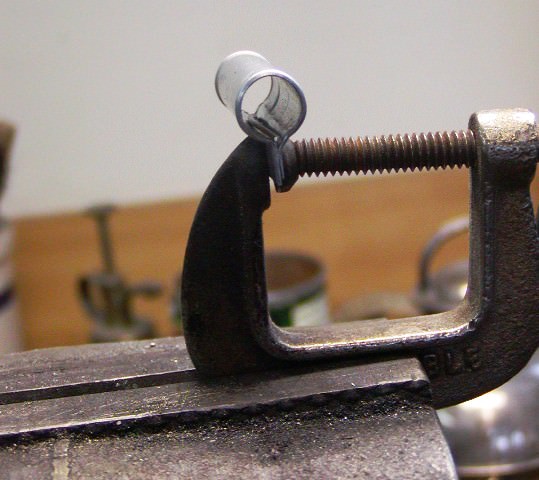
Now for the rear ramrod thimble. I really like the cast steel thimble sold by TOW. It is historically accurate and attractive, but the 3/8" pipe is too large. Rather than try to swedge a sheet steel version, I decided to simply cut off the tang from the TOW thimble, reduce the collar to fir my smaller rear thimble, and solder it on. I made a sheet steel thimble a little longer than the others and then soldered on the tang for the cast thimble.
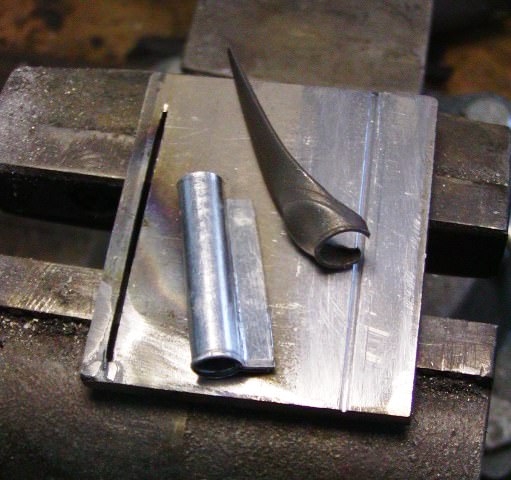
The result is perfect. Below is a collection of nice steel thimbles.
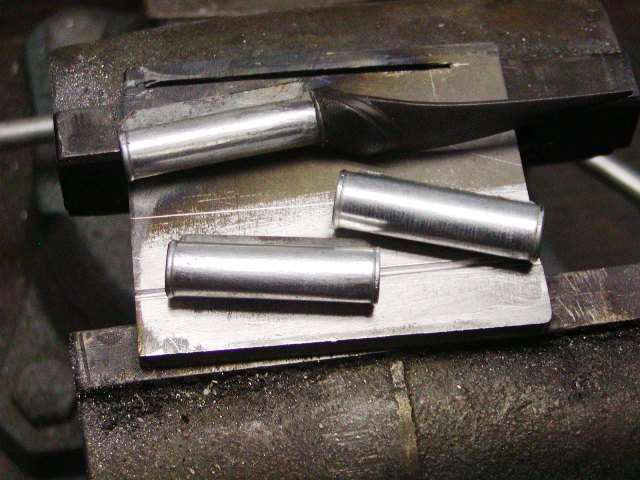
dave
This is an excerpt from a comprehensive tutorial I am doing on another forum discussin building an historically correct English fowler. This method for making ramrod pipes is specifically suited to British fowling guns. When working with steel mounts, our selection of appropriate parts is very limited. The best ramrod thimbles commercially available for British guns are the cast steel English fowler thimbles sold by TOW and others. However, they only come in 3/8" diameter, which is too big for a really slim fowler and not consistent with the originals on which I am basing my build. I decided to make my own in 5/16" diameter but I wanted nicely styled thimbles with raised borders on the ends, like many originals. I used a method I learned from Kit Ravenshear many years ago. I like making thimbles and I am pretty good at it after all these years.
For this gun, I want the forward thimble to be a bit larger than the others to accommodate a substantial swell in the ramrod. The other thimbles are to be slightly larger than 5/16" but the forward thimble is to be 23/64". I want a fairly robust ramrod so it can hold up to loading tight patched round ball as well as bird shot. The original fowlers I own were clearly set up for bird shot and have very wimpy tapered rods. I designed a slight compromise to include a bigger rod but not lose any slimness of the gun. I use a little 3" x 2" steel plate I made years ago to form raised edges on thimbles and bend the tabs.

I used 0.03" thick sheet of mild steel. The first step is calculating the width and length. The thimbles are just under 1.5" long so I needed to add a little extra length for the raised borders. I calculated width figuring they needed to be 5/16" (a little larger actually) and 23/64" and multiplying those dimensions by 3 and then adding 1/2" for 2 1/4" high tabs. I cut the sheet with shears and then squared the piece up.
My little forming plate has a 1/16" wide slot for bending the tabs and a 1/16" wide and 1/32" deep groove for forming the raised edges. I place the flat sheet steel on the plate and line up one end of the thimble with the groove, then punch it in with a cold chisel that has the sharp edge thinned and rounded over. It forms a nice little raised border. I repeat the process for the other end of the thimble


Then I grind off any excess metal beyond the raised border and proceed to bend the tabs.


When those are formed, I take a proper diameter drill or rod and hammer it down along the middle of the thimble to start forming the pipe. I go as far as I can before compressing the tabs in my vise around the mandrel. After forming the tube, I solder the tab together and clean up the ends as well as the tab. A very clean and attractive thimble that duplicates those on many British fowlers of the period is the result.


Now for the rear ramrod thimble. I really like the cast steel thimble sold by TOW. It is historically accurate and attractive, but the 3/8" pipe is too large. Rather than try to swedge a sheet steel version, I decided to simply cut off the tang from the TOW thimble, reduce the collar to fir my smaller rear thimble, and solder it on. I made a sheet steel thimble a little longer than the others and then soldered on the tang for the cast thimble.

The result is perfect. Below is a collection of nice steel thimbles.

dave






